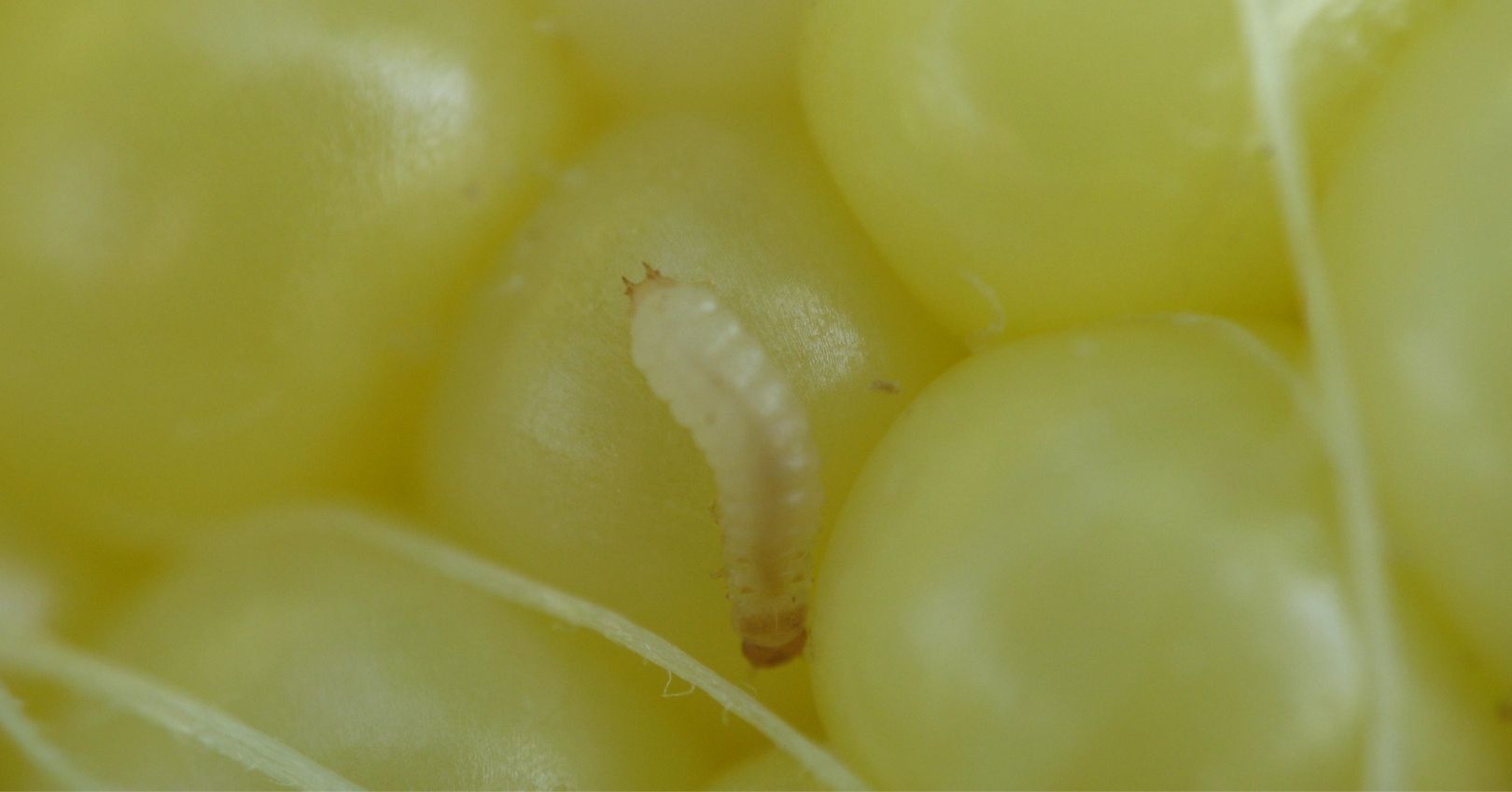Sap Beetles


Description
Adult: The picnic beetle is 1/3 inch (8 mm) long and black with four prominent orange or yellow spots on the wing covers. The dusky sap beetle is 1/6 inch (4 mm) long, with dull black, short wings that don’t fully cover the abdomen, and club-shaped antennae. The corn sap beetle is similar in appearance to the dusky sap beetle, about 1/8 in (3 mm) long, ranging from red-tinged black to brown-yellow.
Egg: Slender, white, about 0.8 mm long and 0.23 mm wide.
Larva: About ¼ inch (6 mm) long, worm-like, with three pairs of short legs near its head, white to cream colored body, and a brown head and posterior.
Pupa: White, turning cream colored and later tan before adult emergence and about 0.2 inches (4.4 mm) in length and 0.1 inches (2 mm) in width.
Life History
Sap beetles overwinter as adults in protected places such as decaying vegetation, debris, or in soils. In April to early May, females begin laying eggs on or near decomposing plant material, such as corn ears, or in the soil. Later generations often lay eggs loosely under the husk in silk channels or between kernels of sweet corn. Females lay about 5 to 15 eggs per day and around 300 to 400 eggs in their lifetime. Sap beetles are attracted to sweet corn as it tassels, and often prefer to deposit eggs on earworm frass or earwormdamaged ears. The numbers of eggs laid in sweet corn increase as kernels mature and produce sugar. Larvae will feed on any sugary foods they can find and will eventually pupate in the soil. Sap beetles require 3-7 weeks, depending on temperature, to complete a generation. There are several generations per season.
Damage
Sap beetles are typically secondary pests of corn, but can act as primary pests if populations are high. These opportunistic invaders are attracted to the insect and corn volatiles associated with damage from other primary pests, such as the corn earworm, which also provide entry sites for the sap beetles. Adult sap beetles feed on corn silk and pollen, and chew on tassels. The larvae attack and feed on intact kernels and may hollow out kernels of the upper half of the ear. Super sweet corn varieties are particularly susceptible to sap beetle damage because of the poor tip coverage by corn husks and the higher concentration of sugar in the developing kernels.
Management
Cultural
- Prevent damage from other primary pests such the corn earworm and European earwig.
- Use field sanitation. Sap beetles are attracted to fermented plant juices and damaged sweet corn. Harvest sweet corn as soon as it is ripe. Eliminate food sources by removing or destroying damaged, diseased or overripe corn. Keep surrounding areas clear of plant debris since sap beetle populations will increase in compost or cull piles adjacent to corn fields.
- Field location. Locate fields away from favored breeding sites such as vegetable and fruit dumps. Sweet corn that mature after surrounding field corn has dropped pollen tends to have lower sap beetle infestation.
- Select resistant varieties. Corn with tight, long husks provide better protection from corn earworm damage and are less likely to be susceptible to sap beetle infestations. Resistant varieties include ‘Country Gentleman’, ‘Golden security’, ‘Tender Joy’, ‘Trucker’s Favorite’, ‘Stowell’s Evergreen’ and ‘Victory Golden’.
- Use bait/pheromone traps. Traps will monitor and reduce adult sap beetle populations. A trap with both a food base attractant (fermenting fruit juice, bread dough, rotting fruits or vegetables) combined with a lure, containing an aggregation pheromone, will be highly attractive to sap beetles.
- Disk or plow corn fields immediately after harvest. Plowing under crop debris will reduce overwintering and breeding sites for sap beetles.

